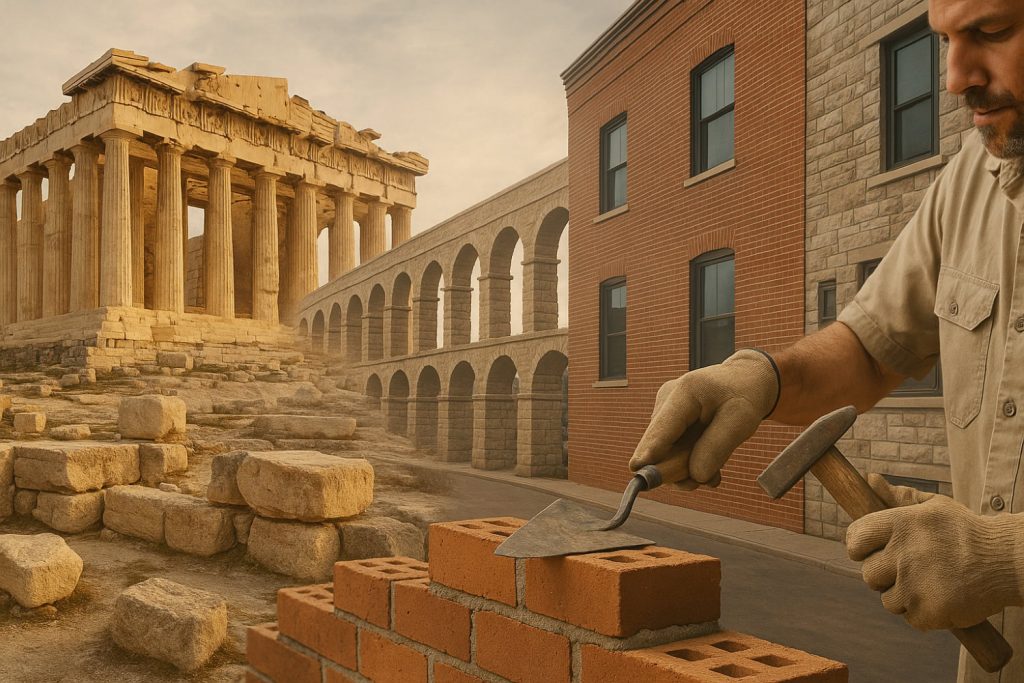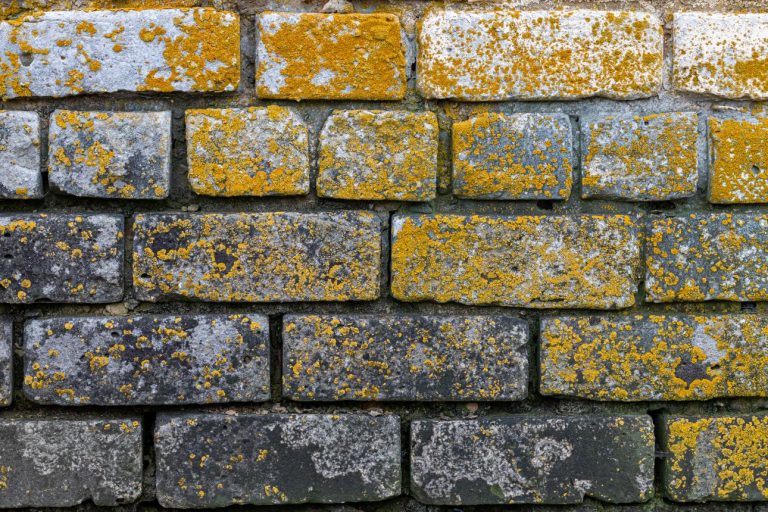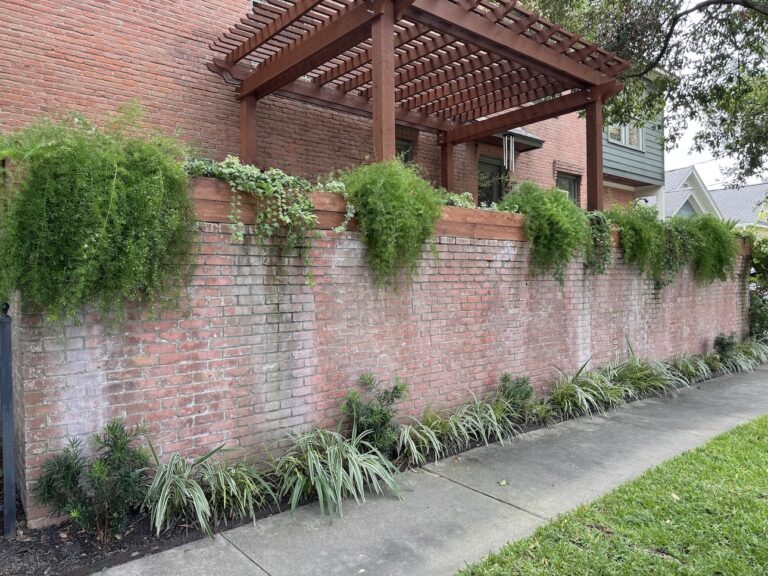Masonry is more than just bricks and mortar—it’s the backbone of civilization. From ancient temples to modern skyscrapers, masonry has shaped our world with its strength, beauty, and durability. This enduring craft has evolved over millennia, adapting to new materials and techniques while preserving its core principles.
Let’s journey through the history of masonry and uncover the legacy of this remarkable trade.
Origins of Masonry: Building with Stone and Mud
The story of masonry begins over 12,000 years ago during the Neolithic period. Early humans sought shelter by stacking stones and using mud to create simple dwellings. These rudimentary structures laid the foundation for more sophisticated building techniques.
Ancient Innovations: From Sun-Dried Bricks to Monumental Structures
Around 8000 BCE, the ancient city of Jericho showcased some of the earliest examples of masonry walls, constructed with large stones and mud mortar. As civilizations advanced, so did their building methods:
- Mesopotamia: Utilized sun-dried clay bricks to build ziggurats and fortifications.
- Egypt: Mastered stone masonry with the construction of the pyramids, using limestone and granite blocks precisely cut and placed without mortar.
- Indus Valley: Developed standardized fired bricks for urban planning and drainage systems.
Classical Mastery: Greek and Roman Contributions
The Greeks introduced refined techniques, employing marble and limestone to construct temples adorned with intricate carvings. They developed the use of columns and introduced architectural orders—Doric, Ionic, and Corinthian—that influenced Western architecture for centuries.
The Romans revolutionized masonry by inventing concrete, allowing for more versatile and durable structures. They built enduring monuments like the Colosseum and aqueducts, utilizing arches and vaults to achieve unprecedented architectural feats.
Medieval Marvels: Gothic Cathedrals and Castles
During the Middle Ages, masonry flourished with the construction of grand cathedrals and fortified castles. Gothic architecture emerged, characterized by pointed arches, ribbed vaults, and flying buttresses. These innovations allowed for taller, more light-filled structures, exemplified by Notre-Dame de Paris and Chartres Cathedral.
Renaissance Revival: A Return to Classical Ideals
The Renaissance period saw a resurgence of classical architecture, with masons drawing inspiration from ancient Greek and Roman designs. Architects like Filippo Brunelleschi and Leon Battista Alberti emphasized symmetry, proportion, and geometry in their works. Masonry techniques advanced with the use of rustication and ashlar masonry, creating visually striking facades.
Industrial Age: Innovations and Standardization
The Industrial Revolution brought significant changes to masonry. The development of Portland cement and reinforced concrete allowed for stronger and more flexible structures. Standardized brick sizes and mass production techniques made masonry more accessible and efficient.
Modern Masonry: Blending Tradition with Technology
Today, masonry continues to evolve, integrating traditional craftsmanship with modern technology. Contemporary masons employ advanced materials and tools, such as computer-aided design (CAD) and laser-guided equipment, to achieve precision and efficiency. Sustainable practices, like using recycled materials and energy-efficient designs, are also becoming integral to modern masonry.
Masonry in Houston: A Legacy of Craftsmanship
In Houston, masonry has played a vital role in shaping the city’s architectural landscape. From historic brick buildings in downtown to modern stone-clad structures, the city’s diverse architecture reflects the enduring appeal of masonry. Local companies like Brick Restoration, Inc. continue to uphold this legacy, offering expert services in brick and stone repair, restoration, and preservation.
Frequently Asked Questions
1. What is masonry?
Masonry is the craft of building structures from individual units, such as bricks, stones, or concrete blocks, bound together with mortar.
2. How old is masonry?
Masonry dates back over 12,000 years, with early examples found in ancient civilizations like Mesopotamia, Egypt, and the Indus Valley.
3. What are the main types of masonry?
The primary types include brick masonry, stone masonry, concrete block masonry, and veneer masonry.
4. Why is masonry still used today?
Masonry offers durability, fire resistance, thermal mass, and aesthetic appeal, making it a preferred choice for many construction projects.
5. What is the difference between ashlar and rubble masonry?
Ashlar masonry uses finely dressed stones laid in regular courses, while rubble masonry employs irregularly shaped stones laid without a specific pattern.
6. How has masonry evolved over time?
Masonry has progressed from simple stone stacking to sophisticated techniques involving concrete, reinforced structures, and modern design tools.
Conclusion
The history of masonry is a testament to human ingenuity and the desire to build structures that stand the test of time. From ancient monuments to contemporary buildings, masonry continues to be a cornerstone of architecture, blending tradition with innovation. As we look to the future, the enduring craft of masonry will undoubtedly continue to shape our built environment.






